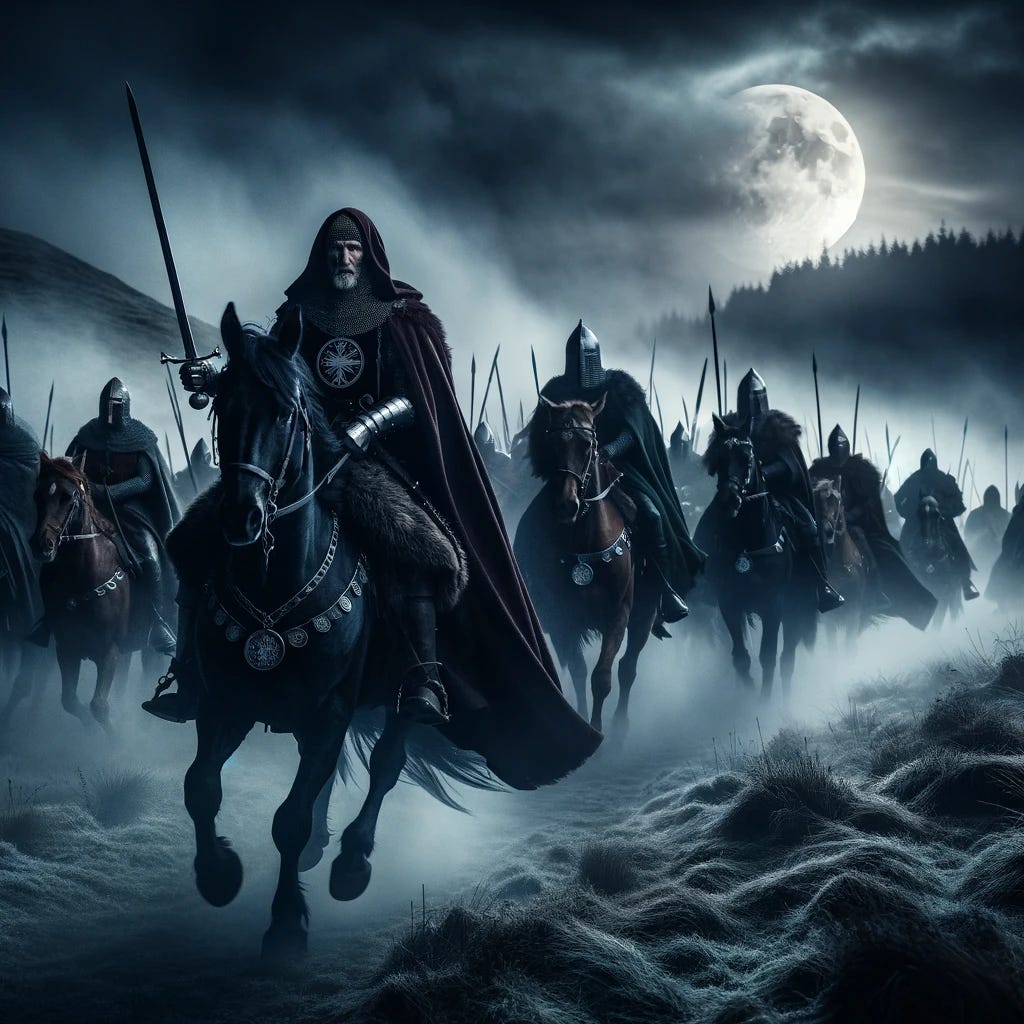The year was 1332, and Scotland was in chaos. Just four years after the death of Robert the Bruce, the nation he fought so hard to free was already at risk of falling under foreign control once again. Edward III of England had thrown his weight behind Edward Baliol, the son of a disgraced former king and a pretender to the Scottish throne. With the backing of disinherited Anglo-Scottish nobles, Baliol launched a military campaign into Scotland, quickly seizing power in the wake of the Battle of Dupplin Moor.
But Baliol’s victory was built on sand. Though crowned at Scone, his grip on the Scottish crown was weak, reliant on English troops and thin pledges of allegiance. His presence in the lowlands stirred rage and resistance among the remaining guardians of the Bruce legacy. And at the heart of that resistance stood Sir Archibald Douglas, the Guardian of the Realm.
Gathering Storm in Moffat
Sir Archibald Douglas was no stranger to war. The younger brother of Sir James Douglas, the legendary "Black Douglas," Archibald inherited both his brother’s fighting spirit and his unflinching loyalty to Scotland. When Baliol and his army moved into Annandale, a key region of the Borders, Douglas saw an opportunity.
By December 1332, Baliol had established a camp at Annan, likely feeling secure after a string of political and military gains. But Douglas, stationed just to the north in Moffat, had other plans. With the support of Sir Andrew Murray of Bothwell, he began quietly assembling a force of 1,000 horsemen—not a standing army, but a cavalry made up of Scottish Border fighters, landowners, and loyal clansmen. They were fast, fiercely motivated, and deeply familiar with the terrain.
These were not just soldiers. These were Border Avengers—men fighting to reclaim their homeland from an invader who had dared to call himself their king.
The Night Raid on Annan
On the night of December 16, 1332, under cover of darkness, Douglas led his cavalry south from Moffat. The freezing air was thick with mist, and the terrain treacherous with winter chill. But they pressed on.
The scene that greeted them at Baliol’s camp was one of unprepared complacency. Believing the south secure, the camp had relaxed its defenses. Many soldiers were asleep, others likely drunk from revelry. It was the perfect moment.
In one of the boldest and most effective surprise attacks in medieval Scottish history, Douglas’s horsemen struck fast and hard. Swords clashed in the moonlight, tents collapsed, and the sleeping soldiers woke to the horror of chaos. Among the dead were prominent English nobles, including Henry Baliol, Edward’s brother, and Walter Comyn.
And what of Edward Baliol? He escaped—but only just. According to contemporary reports, he fled the scene on an unsaddled cart horse, galloping desperately across the Solway Sands and into England, seeking refuge with Lord Dacres of Carlisle. His “army” dissolved into the night, his dreams of ruling Scotland shattered in a single hour.
Legacy of the Border Avengers
The Battle of Annan, as it came to be known, was more than a tactical success. It was a declaration—Scotland would not be ruled by a puppet king. The sheer audacity of Douglas’s strike and the unity shown by his 1,000 horsemen cemented his place as a national hero. It was a demonstration that true power came not from foreign crowns but from the will of the people and the courage of those who defended them.
Though Baliol would return again with English support, his image as a weak, fleeing monarch—literally riding away on a workhorse in his nightclothes—stuck. His grip on the throne was forever tainted. In contrast, Douglas’s raid added another chapter to the saga of Scottish defiance. The town of Moffat, though small, became etched in the story of resistance as the launchpad of the daring cavalry that helped save a kingdom.
Over time, the “Three Stan’in Stanes” near Moffat became part of the local folklore—some claiming they marked the site of Baliol’s defeat, others attributing them to ancient Druidic rites. Whether they stood witness to the charge or not, the memory of that night lingers in Scottish lore as a moment when darkness turned to light through steel, speed, and sheer Scottish determination.
Sir Archibald Douglas and his 1,000 horsemen were more than warriors. They were guardians of a dream—a free and self-governed Scotland. Their ride from Moffat into history is a powerful reminder of what unity, strategy, and courage can achieve, even in the bleakest of winters.





